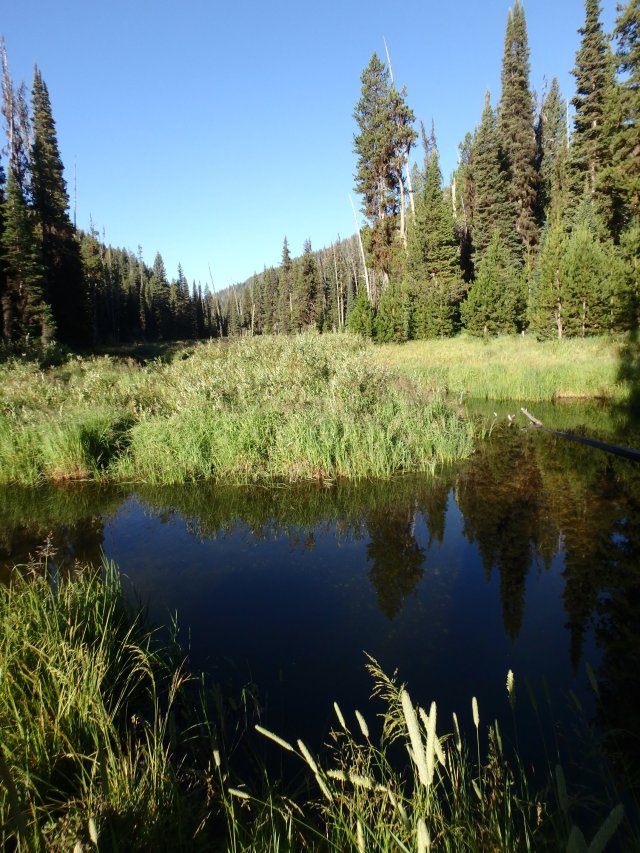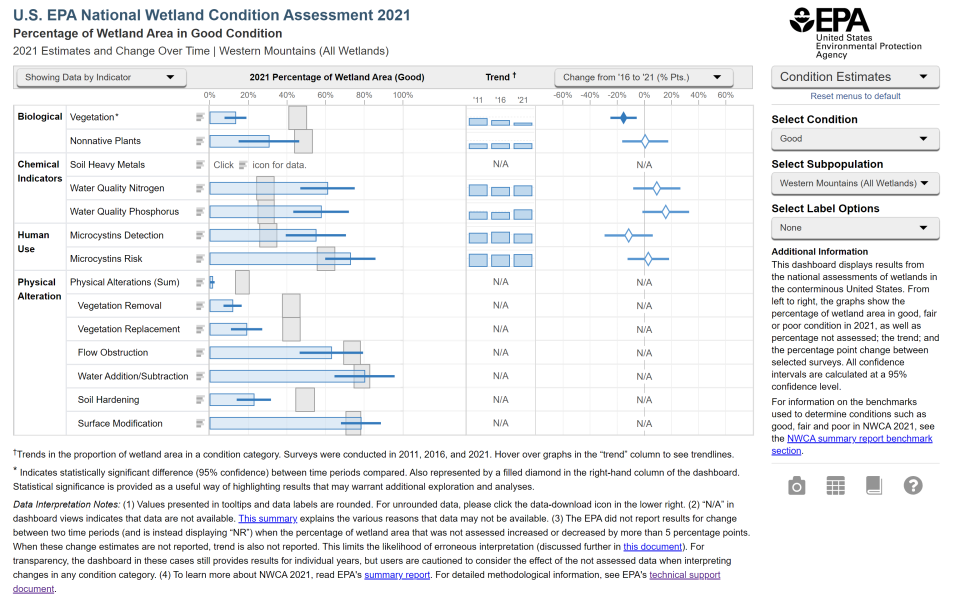Western Mountains Ecoregion - National Wetland Condition Assessment Results
NWCA 2021 Ecoregional Results
Key Results
An estimated 4,722,074 acres of wetland in the Western Mountains ecoregion are represented in the National Wetland Condition Assessment (NWCA).
The NWCA uses a number of indicators to assess the health of wetlands.
- 13% of wetland area rated good for the vegetation indicator and 31% rated good for the nonnative plant indicator.
- One of the most widespread stressors was the cumulative physical alterations indicator, with 64% of wetland area rating poor. Vegetation replacement was the most widespread individual physical alterations indicator, with 52% of wetland area rated poor.
- Nutrients are an essential part of a wetland ecosystem, however excess nutrients can be detrimental. The NWCA found that 7% of wetland area in the Western Mountains rated poor for nitrogen and 12% rated poor for phosphorus. Since many wetlands do not have surface water throughout the year, these indicators could not be assessed for 27% of wetland area.

Change from 2016*
- The NWCA reports that the percent of wetland area rating poor for the vegetation indicator increased by 20 percentage points. The percentage of wetland area in good condition for phosphorus increased by 16 percentage points.
To access more ecoregional specific information, please visit the interactive NWCA Dashboard
*The change analysis is based on information from two points in time- 2016 and 2021

